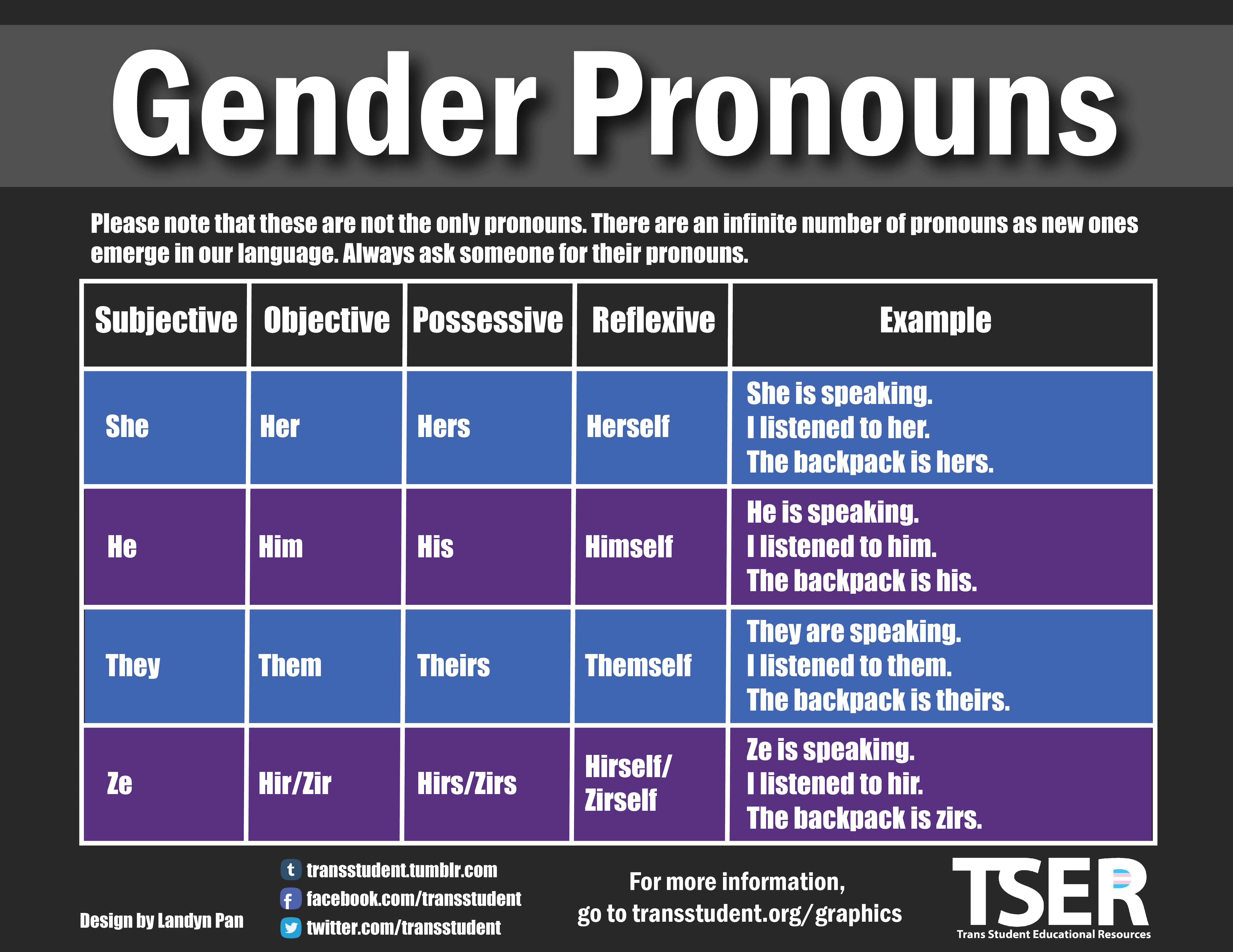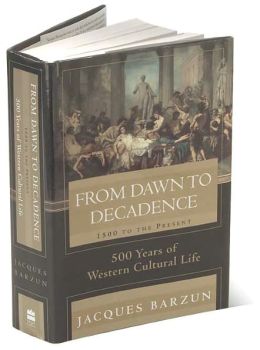To Each Zirs Own
It was bound to happen. Last Friday, the AP style guide approved the use of ‘they’ as a singular, gender-neutral pronoun.
Of course, it was necessary to explain the rationale: “We offer new advice for two reasons: recognition that the spoken language uses they as singular, and we also recognize the need for a pronoun for people who don’t identify as a he or a she,” Paula Froke, lead editor for the AP Stylebook, said on Friday.
Now that it’s official, some have celebrated what amounts to a progressive victory in the long-raging battle over pronouns. What started in the 1960s and 70s as a way to diminish gender stereotypes has come to full bloom in the obliteration of gender in the informal designation.
The objective bystander will note that in so doing, the AP has not only obliterated the concept of gender, but also grammar. The word ‘they’ has always been a way to identify more than one. As such, the attempt to accommodate for one demand has disrupted the language in other ways and ultimately left it more confusing and less effective.

What’s even more impressive about this verbal hi-jinx is that, when the word ‘they’ was fashioned, there were masculine and feminine plurals, and the word ‘they’ was originally the masculine plural. And so it would seem even destroying the language hasn’t removed the terrible gender norms that have plagued our culture from time immemorial. Indeed, the attempt to free ourselves from the bounds of tradition and biology seem only to entrap us more.
We have tried to pitch our traditions out the window only to see them fly back in and slap our face. There is no more suitable outcome for a culture that has already pitched consistency and truth out the window.
Consider the lengths to which we’ve gone: In Canada, you can be demoted if you don’t call people by their preferred pronoun. In New York City, you can be fined for calling a man ‘sir’. Most college classes these days begin with introductions where each student presents his or her name and their preferred pronoun. Our culture has lost its collective mind.
Amid this politico-linguistic chaos, the thoughtful will wonder what all the hubbub is really all about. There are good reasons for pronouns and, despite what everyone in the militant progressive thought police and mainstream academia will tell you, there are even good reasons for the traditional use of ‘him’ and ‘his’ as a generic pronoun. One need only to recall Jacques Barzun’s first digression on a word in his opus, From Dawn to Decadence, for a thorough and insightful explanation.
He begins by explaining why he chose to write (in 2000) adhering to the long use of the term ‘man’ to indicate ‘human being’ despite the pressures of modern culture to use ‘woman’ or some other gender neutral term. What follows is a master course in logic and rhetoric:
The reasons in favor of prolonging that usage are four: etymology, convenience, the unsuspected incompleteness of “man and woman,” and literary tradition.
To begin with the last, it is unwise to give up a long-established practice, familiar to all, without reviewing the purpose it has served. In Genesis we read: “And God created Man, male and female.” Plainly, in 1611 and long before, man meant human being. For centuries zoologists have spoken of the species Man; “Man inhabits all the climactic zones.” Logicians have said “Man is mortal,” and philosophers have posited of “Man’s unconquerable mind.” The poet Webster writes: “And man does flourish but his time.” In all these uses man cannot possibly mean male only. The coupling of woman to those statements would add nothing and sound absurd. The word man has, like many others, to related meetings, which context makes clear.
Nor is the inclusive sense of human being an arbitrary convention. The Sanskrit root man, manu, denotes nothing but the human being and does so par excellence, since it is a cognate with the word for “I think.” In compounds that have been regarded as invidious — spokesman, chairman, and the like — man retains that original sense of human being, as is approved by the word woman, which is etymologically the “wife human being.” The wo (shortened from waef) ought to make woman doubly unacceptable to zealots, but the word as it stands seems irreplaceable. In like manner, the proper name Carmen is made up of car, which meant male, and man, which has its usual human being application. Car, originally Carl or kerl, was the lowest order of freeman, often a rustic. (Carl has further given us Charles and churlish.)
In English, words denoting human beings of various ages and occupations have changed sex over time or lost it altogether. Thus at first girl referred to small children of either sex, likewise maid, which meant simply “grown-up,” and the ending – ster, as in spinster and webster, designated women. It is no longer so in gangster and roadster. Implications have shifted too. In Latin, homo was the human being and vir the male, so that virtue meant courage in battle; in English it long stood for chastity in women. The message of this mixed-up past is that it is best to let alone what one understands quite well and not insist on a one-sided interpretation of a word in common use.
Some may brush aside this lesson from usage old and new with a “Never mind. Nobody knows or thinks about the past and man remains objectionable.” At this point the reformer must face practical needs. To repeat at frequent intervals “man and woman” and follow it with the compulsory “his and her” is clumsy. It destroys sentence rhythm and smoothness, besides creating emphasis where it is not wanted. Where man is most often used, it is the quick neutral word that good prose requires. It is unfortunate that English no longer has a special term for the job like French on. But on is only the slimmed-down version of hom(me)—man again.
For the same neutral use German has man, true to the Sanskrit and meaning people. English had the identical word for the purpose until about 1100. German also has Mensch with the sense of human being. So at bottom both French and German carry on the same double meaning of man as English, just more visibly; it is the only convenient generic term when it is not perversely interpreted. There is after all and obligation to write decent prose and it rules out recurrent oddity or over insistence on detail, such as is necessary (for example) in legal writing. Besides, the would-be reformers of usage utter contradictory orders. They want to woman featured when men are mentioned but they also call for a ban on feminine designations such as actress.
The truth is that any sex conscious practice defeats itself by side tracking the thought from the matter and hand to a social issue—an important one, without question. And on that issue, it is hardly plausible to think that tinkering with words will do anything to enhance the respect for women among people who do not feel any, or increase women’s authority and earnings in places where prejudice is entrenched.
Finally, the thought occurs that if fairness to all divisions of humanity requires their separate mention when referred to in the mass, then the listing must not read simply “men and women”, it must include teenagers. They have played a large role in the world and they are not clearly distinguished in the phrase “men and women.” Reflection further shows that mention should be given to yet another group: children. The child prodigy in music is a small category. But one must not forget the far larger group of 8-, 10-, and 12-year-olds: boys (and sometimes girls in disguise) who in the armies and navies of the West have served in fife-and-drum corps or as cabin boys. Columbus’s ships had a large contingent; all the great explorers of the New World relied on sizable teams of these hard-working crew members. Manet’s painting of the small fife player and one by Eva Gonzales reminds us of the continued use of these little waifs past the mid-19C. Perhaps the last child to be so memorialized is to be seen in Eastman Johnson’s “The Wounded Drummer Boy,” portrayed at the height of the American Civil War.
Western culture is also indebted to children in a less cruel way, through the age-old institution of boys’ choir and church. In Renaissance England the “Boy Players” were actors, not amateurish as in the modern school play, but professionals and organized in companies. One of these was a serious competitor of Shakespeare’s troupe.
Seventeen years after this essay was published, the movement to sanitize our language has finally won for similar if more extreme reasons. The abrupt blossoming of transgenderism has brought the issue to a head and forced the hand of anyone interested in furthering civil rights and political correctness.
But Barzun’s stubborn hold out remains valid. Indeed, it might be even more important to use the old standard these days if only because it is the only coherent approach in an increasingly incoherent arena. The levelheaded will conclude that it’s just not worth keeping up with political correctness anyway. Simply, no pronoun will ever satisfy everyone because today’s critics don’t want to be satisfied; they just want to out-complain the next guy (or girl or whatever). They don’t want proper grammar or good diction; they want their indignation to be heard, and they won’t be satisfied until all standards and traditions are destroyed toward that end.






